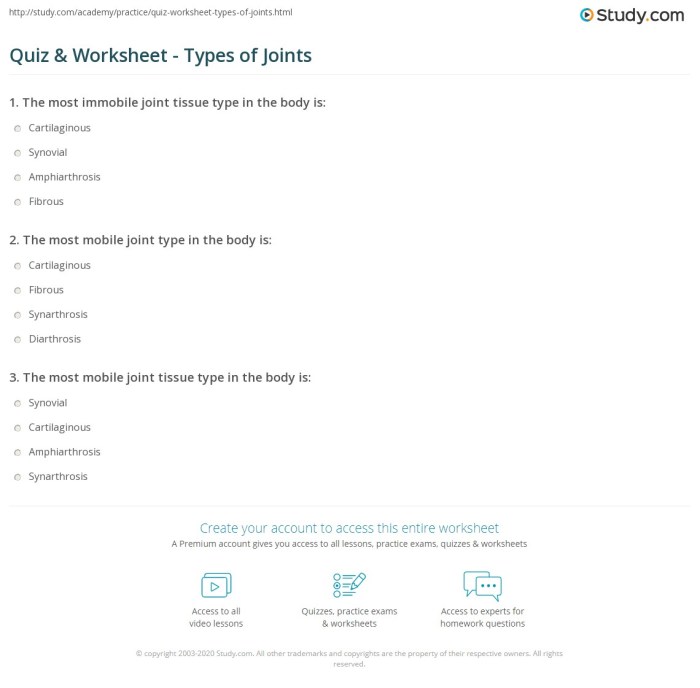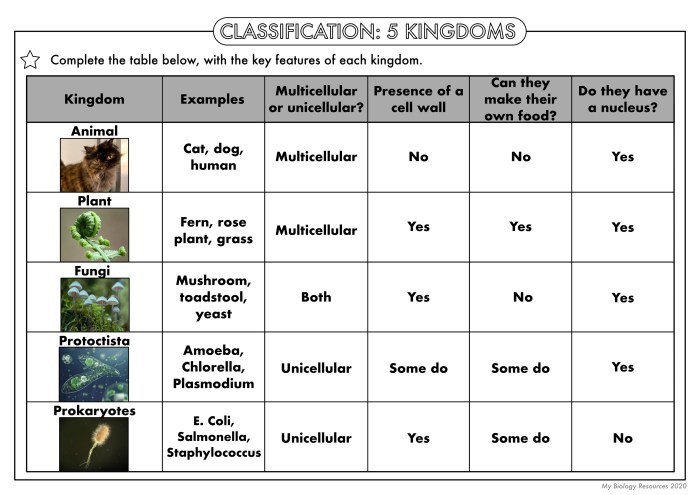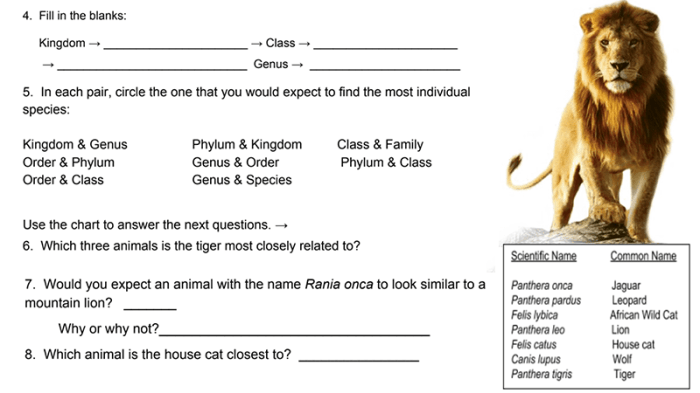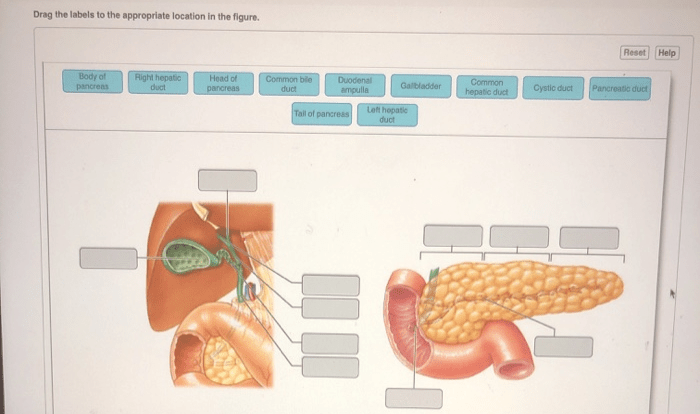Practice joint classification worksheet answers provide a comprehensive understanding of the types, functions, and significance of joints in the human body. This guide explores the intricacies of joint classification, offering a valuable resource for students, healthcare professionals, and fitness enthusiasts alike.
Delving into the diverse types of joints, their unique characteristics, and their impact on movement, this guide unravels the complexities of joint classification, empowering readers with a thorough grasp of this essential aspect of human anatomy.
Overview of Joint Classification: Practice Joint Classification Worksheet Answers
Joint classification is the systematic organization of joints based on their structural and functional characteristics. It provides a framework for understanding the diverse range of joints in the human body, their specific functions, and their clinical significance.
Different types of joints include:
- Fibrous joints: Immovable joints held together by dense connective tissue (e.g., skull sutures)
- Cartilaginous joints: Joints connected by cartilage, allowing limited movement (e.g., intervertebral discs)
- Synovial joints: Freely movable joints lined with a synovial membrane and filled with synovial fluid (e.g., knee joint)
Joint classification is crucial for understanding joint function, diagnosing joint disorders, and guiding treatment strategies.
Types of Joints

| Joint Name | Type | Location | Function |
|---|---|---|---|
| Sutures | Fibrous | Skull | Immovable connection between skull bones |
| Intervertebral discs | Cartilaginous | Spine | Cushion and allow limited movement between vertebrae |
| Knee joint | Synovial | Leg | Allows flexion, extension, and rotation of the leg |
| Hip joint | Synovial | Pelvis | Supports weight and allows a wide range of motion |
| Shoulder joint | Synovial | Arm | Provides a wide range of arm movements, including flexion, abduction, and rotation |
Joint Function
Joints facilitate movement by allowing bones to move relative to each other. The shape, structure, and surrounding tissues of a joint determine its range and type of movement.
- Hinge joints (e.g., knee joint) allow flexion and extension in one plane.
- Ball-and-socket joints (e.g., hip joint) allow a wide range of motion, including flexion, extension, abduction, and rotation.
- Pivot joints (e.g., radioulnar joint) allow rotation around a single axis.
Joint Classification Worksheet

Joint Classification Worksheet
Instructions:Identify the type, location, and function of the following joints.
| Joint Name | Type | Location | Function |
|---|---|---|---|
| Sutures | |||
| Intervertebral discs | |||
| Knee joint | |||
| Hip joint | |||
| Shoulder joint |
Answer Key:
- Sutures: Fibrous, Skull, Immovable connection between skull bones
- Intervertebral discs: Cartilaginous, Spine, Cushion and allow limited movement between vertebrae
- Knee joint: Synovial, Leg, Allows flexion, extension, and rotation of the leg
- Hip joint: Synovial, Pelvis, Supports weight and allows a wide range of motion
- Shoulder joint: Synovial, Arm, Provides a wide range of arm movements, including flexion, abduction, and rotation
Joint Classification in Practice

Joint classification is applied in various real-world settings:
- Diagnosis:Identifying joint type can help diagnose joint disorders (e.g., osteoarthritis, rheumatoid arthritis).
- Treatment:Treatment options for joint disorders vary depending on joint type and function.
- Rehabilitation:Exercise and rehabilitation programs can be tailored to specific joint types to restore function and prevent further damage.
Query Resolution
What is the purpose of joint classification?
Joint classification provides a systematic way to categorize and describe different types of joints based on their structure, function, and range of motion.
How does joint classification aid in diagnosis and treatment?
Joint classification helps healthcare professionals accurately diagnose joint disorders and develop appropriate treatment plans by understanding the specific characteristics and functions of different joint types.
What are the benefits of using a joint classification worksheet?
Joint classification worksheets provide a structured approach to learning and practicing joint identification, enhancing understanding of joint anatomy and function.
